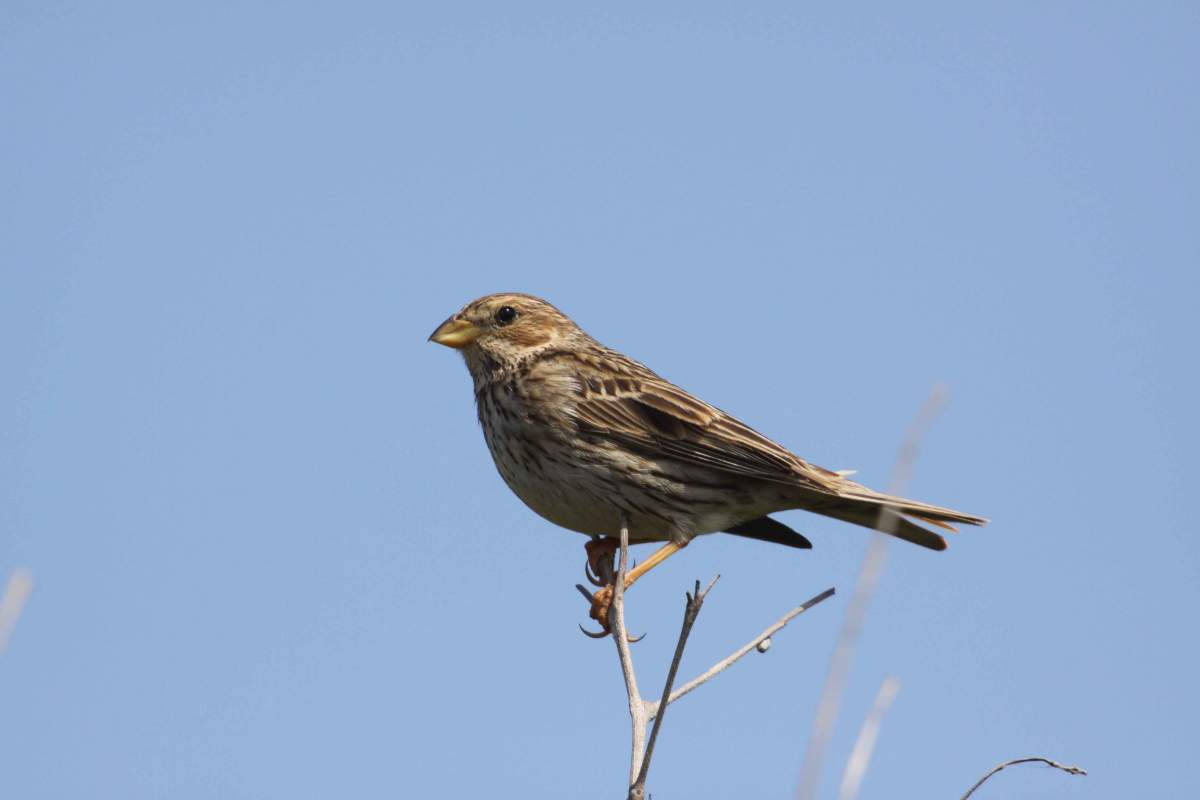BTO create and publish a variety of important articles, papers, journals and other publications, independently and with our partners, for organisations, government and the private sector. Some of our publications (books, guides and atlases) are also available to buy in our online shop.
Annual report of the Seabird Monitoring Programme
Seabird Population Trends and Causes of Change: 1986–2023
This report presents the latest seabird population trends in breeding abundance and productivity using data from the Seabird Monitoring Programme (SMP).
The report documents changes in the abundance and productivity of breeding seabird species in Britain and Ireland from 1986 to 2023, and provides a detailed account of the 2021, 2022 and 2023 breeding seasons.

Search settings
Improving our understanding of the distribution and status of bats within the Ryevitalise Landscape Partnership Scheme area
Author: Newson S.E., Berthinussen A.
Published: 2019
27.02.19
Reports
Effects of individual misidentification on estimates of survival in long-term mark–resight studies
Author: Tucker, A.M., McGowan, C.P., Robinson, R.A., Clark, J.A., Lyons, J.E., DeRose-Wilson, A., Du Feu, R., Austin, G.E., Atkinson, P.W. & Clark, N.A.
Published: 2019
19.02.19
Papers
The consequences of land sparing for birds in the United Kingdom
Author: Lamb, A., Finch, T., Pearce‐Higgins, J.W., Ausden, M., Balmford, A., Feniuk, C., Hirons, G., Massimino, D. & Green, R.E.
Published: 2019
As demand for food increases, a crucial question in conservation is how to limit the negative impacts of agriculture on biodiversity. ‘Land sparing’ has been proposed as a strategy to address this problem, with high-yield agriculture minimising the area of farmland so that other land can be spared for conservation. Research – mostly from tropical regions – suggests that most species would achieve larger populations under a land-sparing strategy than under a strategy in which lower-yielding wildlife-friendly farmland delivers food production over a larger total area.
15.02.19
Papers

Weak effects of geolocators on small birds: a meta‐analysis controlled for phylogeny and publication bias
Author: Brlík V, Koleček J, Burgess M, Hahn S, Humple D, Krist M, Ouwehand J, Weiser EL, Adamík P, Alves JA, Arlt D, Barišić S, Becker D, Belda EJ, Beran V, Both C, Bravo SP, Briedis M, Chutný B, Ćiković D, Cooper NW, Costa JS, Cueto VR, Emmenegger T, Fraser K, Gilg O, Guerrero M, Hallworth MT, Hewson C, Jiguet F, Johnson JA, Kelly T, Kishkinev D, Leconte M, Lislevand T, Lisovski S, López C, McFarland KP, Marra PP, Matsuoka SM, Matyjasiak P, Meier CM, Metzger B, Monrós JS, Neumann R, Newman A, Norris R, Pärt T, Pavel V, Perlut N, Piha M, Reneerkens J, Rimmer CC, Roberto‐Charron A, Scandolara C, Sokolova N, Takenaka M, Tolkmitt D, van Oosten H, Wellbrock AHJ, Wheeler H, van der Winden J, Witte K, Woodworth B & Procházka P
Published: 2019
15.02.19
Papers
Spatial and habitat variation in aphid, butterfly, moth and bird phenologies over the last half century
Author: Bell, J.R., Botham, M.S., Henrys, P.A., Leech, D.I., Pearce-Higgins, J.W., Shortall, C.R., Brereton, T.M., Pickup, J. & Thackeray, S.J.
Published: 2019
Global warming has advanced the timing of biological events, potentially leading to disruption across trophic levels. The potential importance of phenological change as a driver of population trends has been suggested. To fully understand possible impacts, there is a need to quantify the scale of these changes spatially and according to habitat type. We studied the relationship between phenological trends, space and habitat type between 1965 to 2012 using an extensive UK dataset comprising 269 aphid, bird, butterfly and moth species. We modelled phenologies using generalized additive mixed models that included covariates for geographical (latitude, longitude, altitude), temporal (year, season) and habitat terms (woodland, scrub, grassland). Model selection showed that a baseline model with geographical and temporal components explained the variation in phenologies better than either a model in which space and time interacted or a habitat model without spatial terms. This baseline model showed strongly that phenologies shifted progressively earlier over time, that increasing altitude produced later phenologies and that a strong spatial component determined phenological timings, particularly latitude. The seasonal timing of a phenological event, in terms of whether it fell in the first or second half of the year, did not result in substantially different trends for butterflies. For moths, early season phenologies advanced more rapidly than those recorded later. Whilst temporal trends across all habitats resulted in earlier phenologies over time, agricultural habitats produced significantly later phenologies than most other habitats studied, probably because of non‐climatic drivers. A model with a significant habitat‐time interaction was the best‐fitting model for birds, moths and butterflies, emphasising that the rates of phenological advance also differ among habitats for these groups. Our results suggest the presence of strong spatial gradients in mean seasonal timing, and non‐linear trends towards earlier seasonal timing that varies in form and rate among habitat types.
14.02.19
Papers